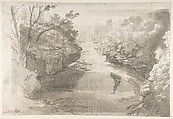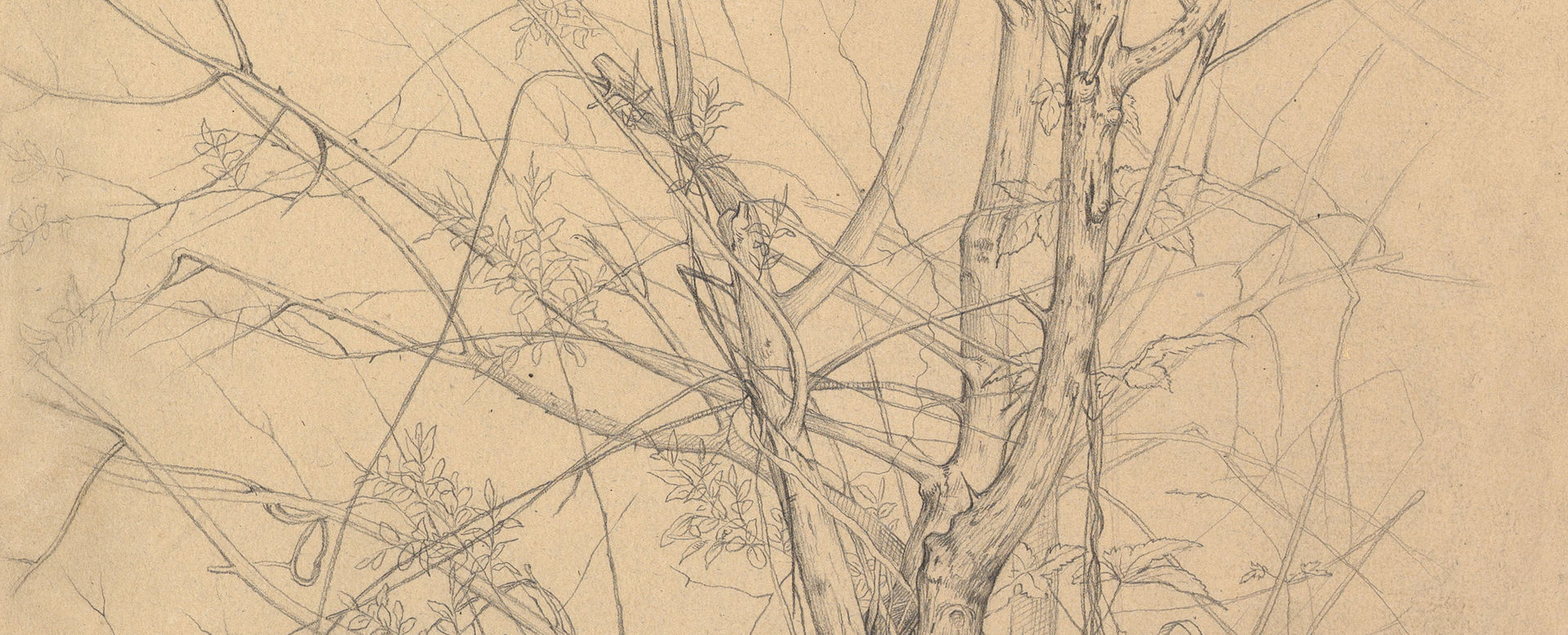Corra Linn, the Falls of the Clyde
Joseph Farington British
Not on view
Farington’s expressive study centers on a waterfall in Lanarkshire, Scotland (linn is Gaelic for "falls"). Squared for transfer, it was intended as the foundation for a finished work and includes techniques that range from freely applied pen and ink (for foreground foliage), brush and wash (to describe shade), and graphite (for the falls). Reserved paper indicates light falling from the left and represents patches of moving water. Few English artists explored Scotland at this date, but Farington sketched along the rivers Forth and Clyde in the summer of 1788 to design aquatints for an anticipated concluding volume of The History of the Principal Rivers of Great Britain. Unfortunately, the French Revolutionary Wars affected the print trade and these Scottish views were never published.
Due to rights restrictions, this image cannot be enlarged, viewed at full screen, or downloaded.



